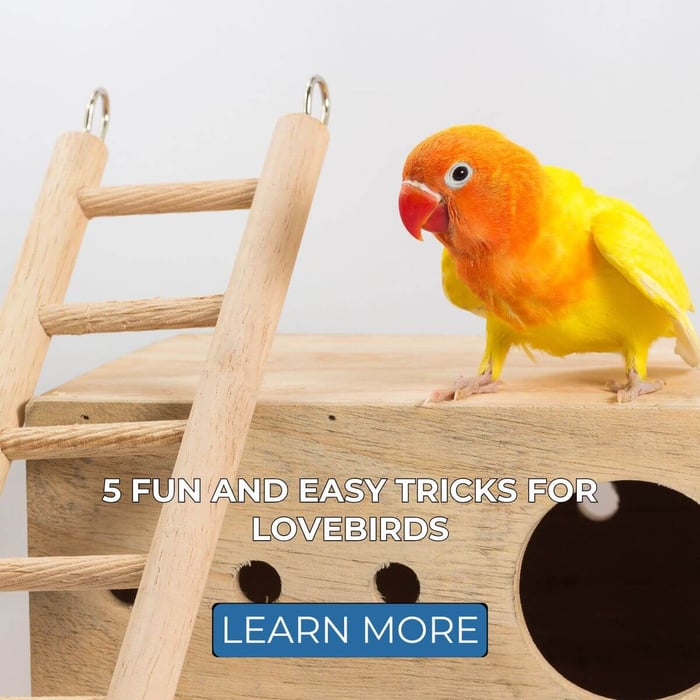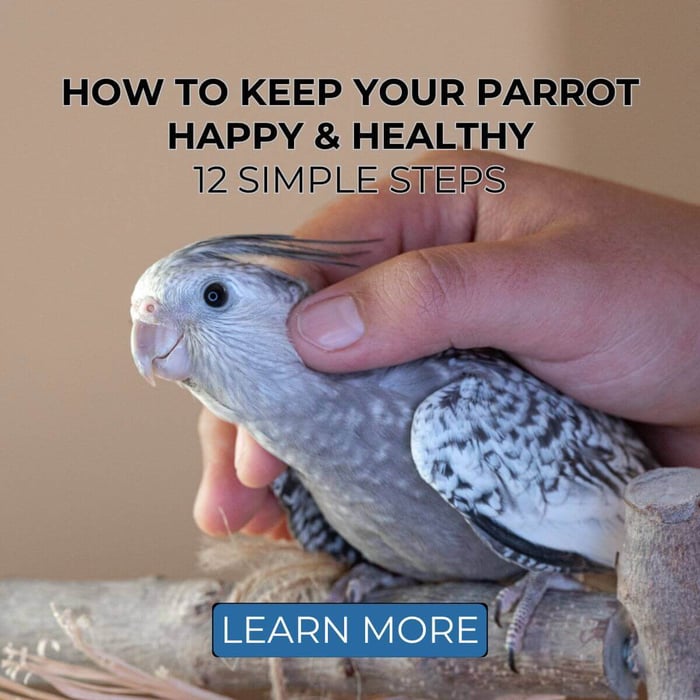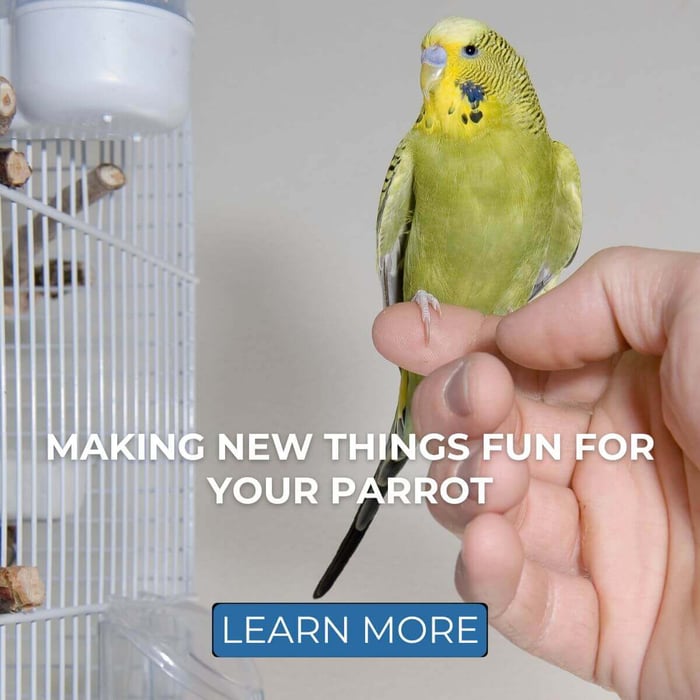Hide & Seek Foraging and Puzzle Toys
Anyone who has had a pet parrot or bird for a length of time will tell you that keeping them entertained and mentally stimulated is a full-time job! As social and intelligent birds, parrots require constant engagement to thrive. To come up with new ideas for play and enrichment can become a daily challenge, especially when juggling work, family, and other necessities. However, incorporating foraging and puzzle toys into your parrot's routine can not only alleviate boredom but also promote their natural behaviours. Here are a few foraging and puzzle toys and ideas to keep that feathered friend of yours happy and healthy.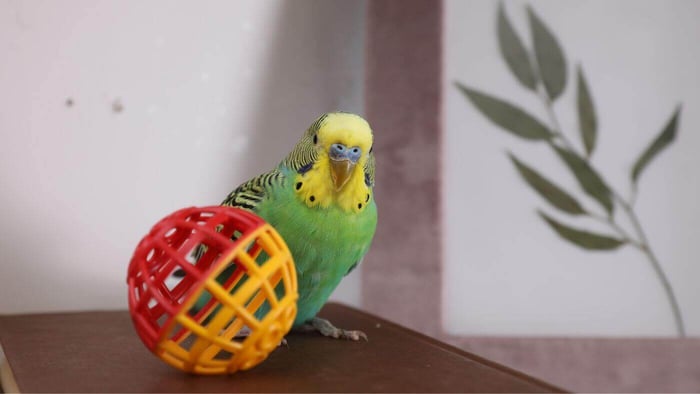
Understanding Foraging Behaviour
In the wild, parrots spend a significant portion of their day foraging for food, exploring their environment, and engaging with their flock. This natural behaviour is critical for their mental health and overall well-being. Unfortunately, captive parrots often lack opportunities to express these instincts fully. As a responsible parrot owner, it's your responsibility to fill in those gaps by creating an enriching environment that mimics their natural habitat.
Foraging and puzzle toys are excellent tools for stimulating your parrot mentally and physically. These toys encourage them to work for their food and engage with their surroundings in a meaningful way. Let's explore some fun and safe options for you to incorporate into your parrot's daily life.
Hide & Seek Foraging and Puzzle Toys
One simple and effective way to enhance your parrot's environment is to use hide-and-seek foraging toys. These toys are designed to challenge your parrot to find hidden treats or food, mimicking the foraging process.
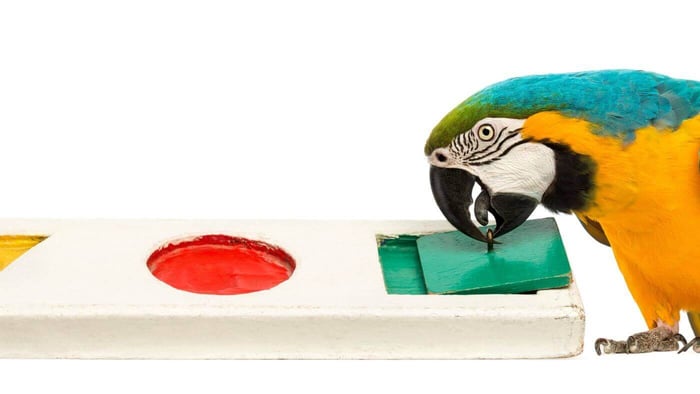
Ideas for Hide & Seek Toys
- Treat Balls: These toys can be filled with your parrot's favourite snacks. As your bird rolls the ball around, treats are dispensed, encouraging them to keep playing.
- Paper Rolls: Take an empty toilet paper roll, fill it with treats, and fold the ends shut. Your parrot will have a blast tearing it apart to reach their rewards.
- Hanging Foraging Bags: These can be made from bird-safe materials and filled with various goodies. Hang them in different areas of the cage to encourage exploration.
Natural Foraging and Puzzle Toys
Natural foraging and puzzle toys can be an excellent addition to your parrot's playtime. These toys not only provide entertainment but also align with your bird's instincts. However, safety is paramount when selecting natural items. It's crucial to consider the species of plants you're using, ensuring they are non-toxic and free from hazards such as barbs and spines. Here are some suggestions:
Safe Natural Items for Foraging and Puzzle Toys
Branches:
Suitable types include fir, pine (sap and needle-free), willow, apple, and grapevine (unsprayed).
You can place these branches on top of your parrot's enclosure or use them as perches. Ensure they are clean and free from harmful substances by Heat sterilising them at 115°C for an hour or cleaning them with grapefruit extract and letting them dry in the sun.
Flowering Shrubs:
When plants like Saskatoon and apple are in bloom, allow your bird to pick the blossoms off. This not only serves as a treat but also keeps them engaged with their environment.
Grazing Plants:
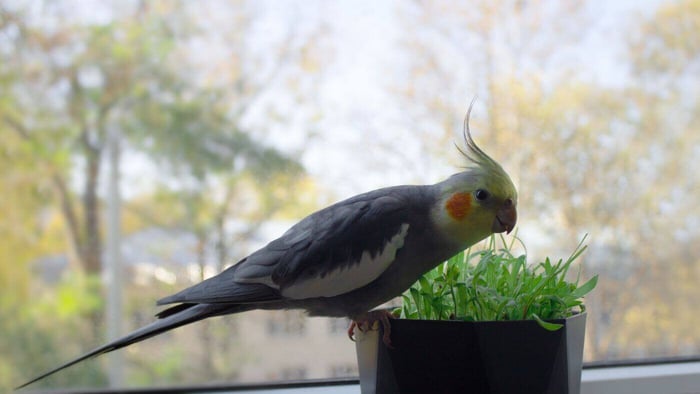
Planting oats, wheat, and cat grasses in pots is another great way to provide foraging opportunities. Cover the soil with plastic mesh or place one pot inside a larger pot to prevent your parrot from eating the dirt.
Pine or Spruce Cones:
Many parrots enjoy these! Heat sterilises them at 93°C for 20 minutes, then stuff them with treats or chewable toys to create an exciting foraging challenge.
Safe Houseplants:
Incorporate non-toxic plants like spider plants, jade, and ponytail palms into your parrot's environment. Just ensure that potted plants are kept clean and free from mould by using GSE oil (10-15 drops per gallon) every 2 to 3 weeks.
Leafy Vegetables:
Offering leafy greens like kale, dandelion, and chickweed can be both nutritious and enjoyable. You can weave them through the cage wire, tie them with branches, or incorporate them into existing toys.
These ideas are just a few of the countless options for foraging and puzzle toys to keep your parrot companion happy and stimulated. Be inventive, but also consider safety first. If you don't feel completely comfortable with a toy, it's best not to use it!
The Benefits of Foraging and Puzzle Toys
Incorporating foraging and puzzle toys into your parrot's routine offers several benefits:
- Mental Stimulation: Engaging your parrot in activities that require problem-solving keeps their mind sharp and prevents boredom, which can lead to destructive behaviours.
- Physical Exercise: Many foraging toys encourage movement, whether it's climbing, rolling, or stretching, helping to keep your bird physically fit.
- Natural Behaviours: Foraging toys mimic natural behaviours, allowing your parrot to express their instincts in a safe environment.
- Bonding Opportunities: Engaging in playtime with your parrot can strengthen your bond. You can participate in the foraging process by hiding treats or playing together with interactive toys.
Maintaining Engagement
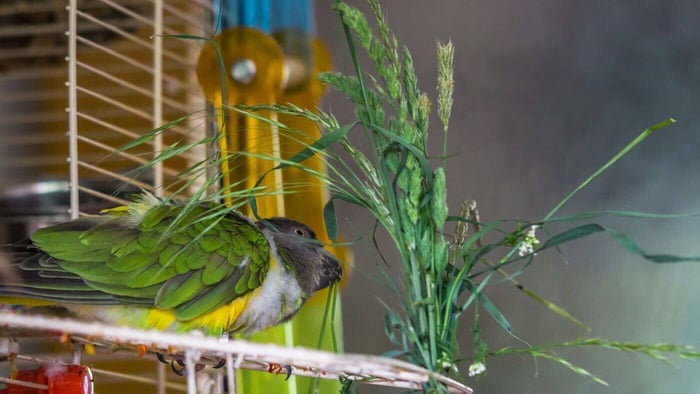
It's essential to rotate foraging and puzzle toys regularly to maintain your parrot's interest. A toy that was exciting last week may lose its appeal over time. Here are some tips to keep things fresh:
- Change Locations: Move toys around in the cage or different areas of your home to encourage exploration.
- Vary Treats: Use a variety of treats in your foraging toys to keep your parrot intrigued. You might include nuts, seeds, or even small pieces of fresh fruit or vegetables.
- Combine Toys: Use multiple toys in combination to create a more complex foraging challenge. For example, smaller toys can be hidden within larger ones for an added layer of difficulty.
Conclusion
Caring for a parrot means providing an enriching environment that caters to their natural instincts. Foraging and puzzle toys are essential tools in keeping your feathered friend mentally and physically stimulated. By using a combination of natural items and engaging toys, you can create a fulfilling playtime experience that promotes your parrot's well-being. Remember, safety always comes first, so choose materials that are non-toxic and appropriate for your bird.
This article was originally written and published by Desi Milpacher and World Parrot Trust.
For more articles like this, visit our Avian Article section.

